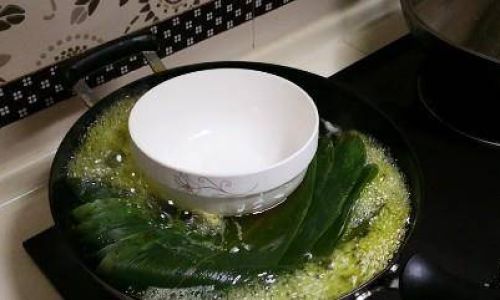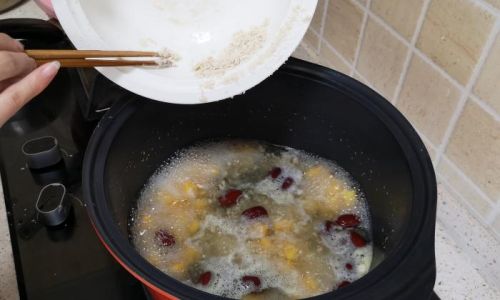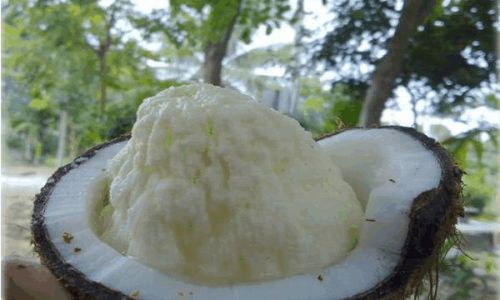Introduction
Winter melon, scientifically known as Benincasa hispida, is a popular vegetable in many Asian cuisines, particularly in China, where it is revered for its cooling properties and nutritious benefits. This large, green-skinned, and white-fleshed fruit is often used in soups, stir-fries, and desserts due to its mild flavor and high water content. One of the simplest yet most delightful ways to prepare winter melon is by boiling it. However, the question arises: how long should you boil winter melon in cold water to achieve the perfect texture and flavor? This article aims to provide a comprehensive guide on boiling winter melon, covering everything from preparation tips to cooking times and nutritional benefits.
Understanding Winter Melon
Before diving into the specifics of boiling winter melon, it’s crucial to understand its unique characteristics. Winter melon has a tough, inedible rind that needs to be peeled off before cooking. The flesh inside is soft, juicy, and slightly sweet, making it an excellent base for soups and broths. Its high water content and low calorie density make it an ideal choice for those looking to stay hydrated and maintain a healthy weight.
Winter melon is also rich in vitamins and minerals, including vitamins A and C, potassium, and magnesium. These nutrients contribute to various health benefits, such as improved skin health, enhanced immune function, and better digestion. Furthermore, winter melon is believed to have diuretic properties, helping to flush out excess fluids and toxins from the body.

Preparing Winter Melon for Boiling
Before you start boiling your winter melon, there are a few preparation steps you need to follow:
-
Selection: Choose a ripe winter melon that is heavy for its size, has a smooth and shiny rind without cracks or soft spots, and feels firm when pressed.
-
Cleaning: Rinse the winter melon under running water to remove any dirt or debris.
-
Peeling: Use a sharp knife to peel off the rind. Be careful as the rind can be quite tough and may require some force.
-
Seeding: Cut the winter melon in half and scoop out the seeds and any fibrous strings using a spoon.
-
Cutting: Depending on your recipe, cut the peeled and deseeded winter melon into chunks, slices, or small dice.
Boiling Winter Melon in Cold Water: The Process
Now that your winter melon is prepared, it’s time to boil it. Here’s a step-by-step guide to ensure perfect results:
-
Pot and Water: Select a large pot that can comfortably hold the amount of winter melon you’re cooking. Fill the pot with enough cold water to fully submerge the winter melon pieces.
-
Bringing to a Boil: Place the pot on the stove over medium-high heat. Bring the water to a rolling boil.
-
Adding Winter Melon: Once the water is boiling, carefully add the prepared winter melon pieces to the pot. Stir gently to ensure they are not sticking to the bottom.
-
Cooking Time: The cooking time for winter melon in cold water varies depending on the size and thickness of the pieces. Generally, small dice or thin slices will take around 10-15 minutes to become tender, while larger chunks may require 20-30 minutes. It’s important to note that winter melon cooks quickly due to its high water content, so it’s essential to keep a close eye on it to prevent overcooking.
-
Testing for Doneness: To check if the winter melon is cooked, use a fork or a sharp knife to pierce a piece. It should slide in easily without resistance. If the winter melon still feels firm or resistant, continue cooking for a few more minutes and test again.
-
Flavoring and Seasoning: Once the winter melon is cooked, you can add seasonings or other ingredients according to your recipe. Common additions include salt, pepper, ginger, and green onions. If you’re making a soup, you might add chicken or vegetable broth, tofu, or mushrooms for added flavor and nutrition.
Tips for Perfect Boiled Winter Melon

To ensure your boiled winter melon turns out perfectly every time, here are some useful tips:
-
Use Fresh Winter Melon: Always opt for fresh, ripe winter melon for the best flavor and texture. Avoid using old or stored winter melon, as it may have lost its moisture and sweetness.
-
Don’t Overcook: Winter melon cooks quickly and overcooking can turn it into a mushy mess. Keep a close eye on the pot and test for doneness frequently.
-
Season to Taste: Winter melon has a mild flavor, so don’t be afraid to experiment with different seasonings and spices to enhance its taste.
-
Serve Immediately: Boiled winter melon is best enjoyed hot. If you need to keep it warm, transfer it to a serving dish and cover it with a lid to retain heat.
Nutritional Benefits and Uses of Boiled Winter Melon
Boiled winter melon is not only delicious but also packed with nutritional benefits. Here are some of the ways it can benefit your health:
-
Hydration: With its high water content, boiled winter melon is an excellent source of hydration, especially during hot weather or when you’re feeling under the weather.
-
Digestion: The fiber in winter melon helps to improve digestion and prevent constipation.
-
Weight Management: Low in calories and high in water content, boiled winter melon can help you feel full longer, aiding in weight management.
-
Skin Health: The vitamins and minerals in winter melon contribute to healthy skin, promoting elasticity and reducing the appearance of wrinkles.
-
Immune Support: Vitamins A and C in winter melon boost the immune system, helping your body fight off infections and diseases.
Conclusion
Boiling winter melon in cold water is a simple yet rewarding way to enjoy this nutritious vegetable. By following the steps outlined in this guide, you can achieve perfectly cooked winter melon that is tender, flavorful, and packed with health benefits. Whether you’re making a soothing soup, a light broth, or a hearty stew, boiled winter melon is sure to be a hit. So, the next time you’re in the kitchen, give this versatile vegetable a try and discover its many delicious possibilities. Remember, the key to perfect boiled winter melon is patience and attention to detail. Happy cooking!






0 comments